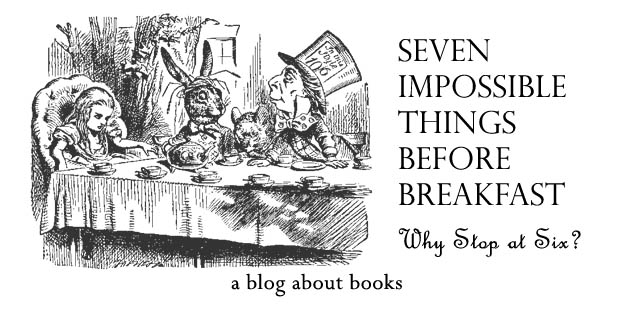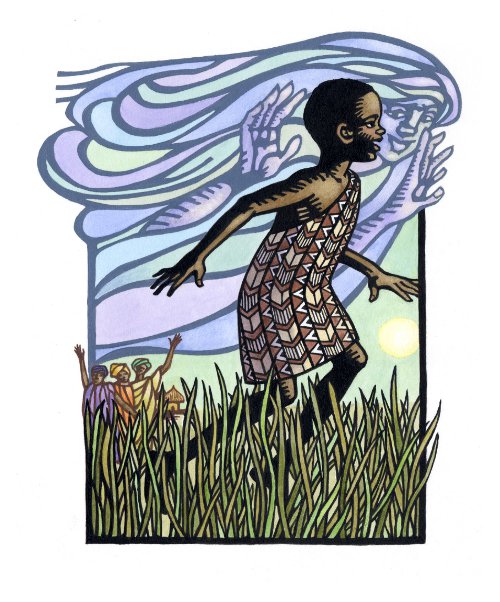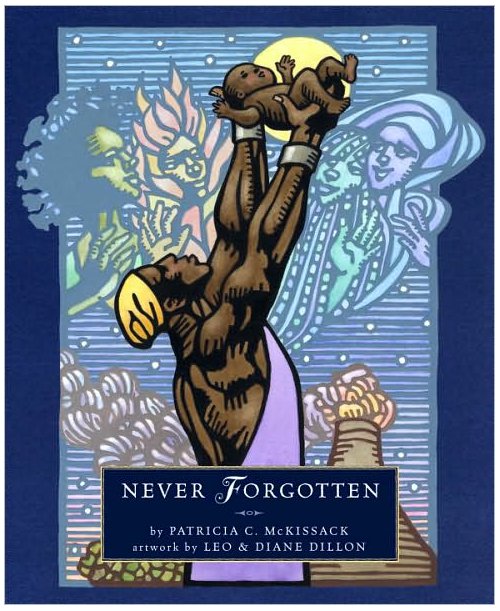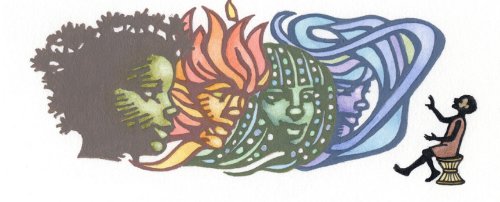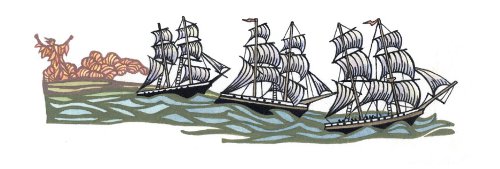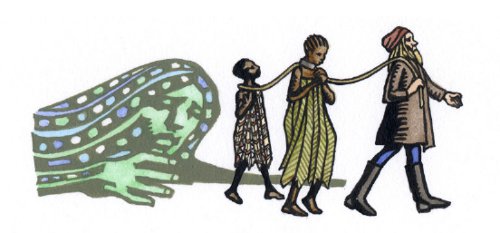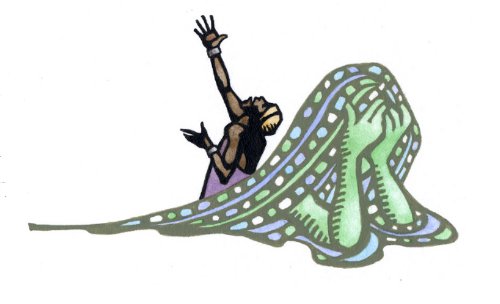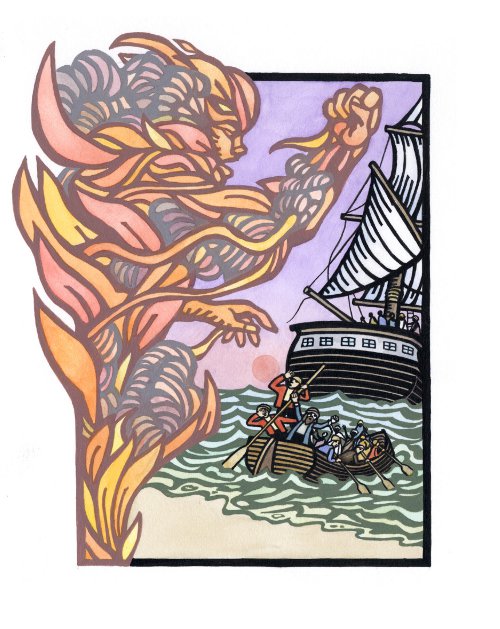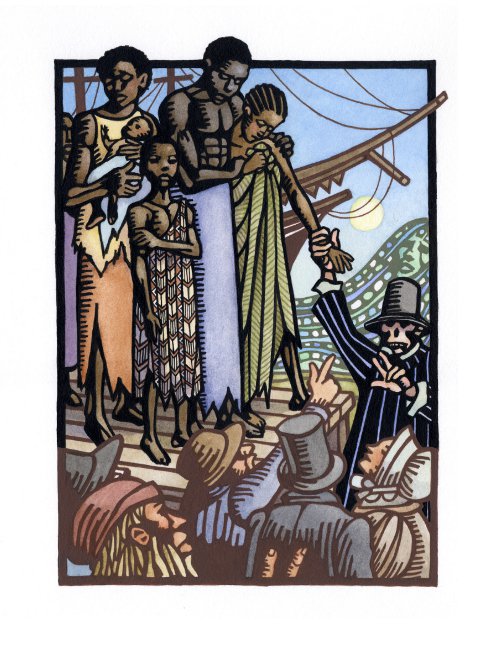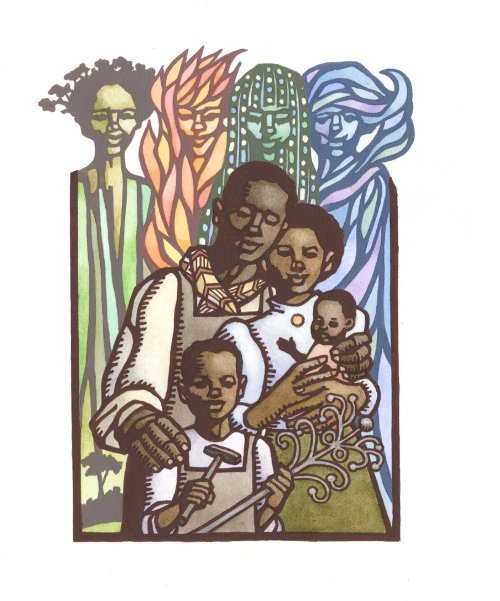Leo and Diane Dillon’s ‘Searing Cycle of Poems’
By Jules
The years passed in a march of seasons./The boy grew tall and strong/Under the loving eyes of his father./And the protective forces of the Mother Elements,/Who were his teachers,/His counselors,/His friends."
How do you introduce illustrators like Leo and Diane Dillon? Well, they're not here visiting today (I wish), but how, I wonder, do I introduce their art without sounding like a blithering starstruck halfwit? Their work is simply stunning and quite often breathtaking and always beautiful. They are living legends, who have illustrated more than sixty books for children and are two-time Caldecott Medal winners.
If you're a fan, as I clearly am, you'll want to see a copy of their latest illustrated title, written by the great Patricia C. McKissack, who herself has also acquired a slew of impressive awards in her career, including a Newbery Honor and a Coretta Scott King Award. It's called Never Forgotten, was released by Schwartz & Wade this month, and has been met with starred reviews all-around.
Written in verse ("a searing cycle of poems" Kirkus calls it), it's the chilling story of a young African boy taken by slave traders to America.
Dinga, a great blacksmith living in West Africa in 1725, is honored for his skill, yet also for his powerful magicianship. He can "speak the old names/Of the Mother Elements,/Earth,/Fire,/Water, Wind,/And they would do his bidding..." After his wife dies during childbirth, Dinga calls upon these elements of the earth to help raise his son. Musafa grows as a happy child with his loving father and the Earth, Fire, Water, and Wind to raise him.
But, after becoming an apprentice to his father, he is taken by slave traders. There is a great search, each element wreaking as much havoc as possible in order to separate Musafa from the men and free him (earthquake, a blazing fire that engulfs the grasslands).
It's Water who returns to say that the boy was sold to the Charlack Plantation in Carolina. (This is, arguably, the book's most touching moment, pictured below: "So saddened by what she had to report,/Water melted into the river,/Where her tears flooded the shore.") Dinga is heartbroken, but it's Wind who ultimately brings good news about his son. Yes, good news, because Musafa has a will of steel, bravery in spades, and compassion--not to mention he carries the memory of his family with him.
But I don't want to give it all away, so I shall stop there. It's powerful stuff, a story of family ties, courage, and survival: "What father can hide his pain/When his child is stolen?" McKissack writes. "What mother does not lament/The loss of a son or daughter?/Remember the wisdom of Mother Dongi:/'Kings may come and go,/But the family endures forever.'/Think on that when the silence comes."
The Kirkus review adds that this is a "totally absorbing poetic celebration of loss and redemption." Indeed. "The pictures," wrote School Library Journal, "demonstrate the miracle of superb book illustration: how something that lies flat on the page can convey such depth, texture, and feeling." The Dillons' artwork, rendered in acrylics and watercolors, is haunting-boldly-outlined on a primarily Earth-toned palette and sometimes, as you can see in one of the illustrations below, depicting the slave traders as skeletons, faces of death.
Since the art speaks way more than I ever can, here is a bit more...
"THIEVES!/Chase,/Run,/I scorch their path./Anger!/I hurl long spears of fire at their heels./Rage!/They escape to the sandy beach./Blocked, / I can go no farther./Fury!"
"Musafa,/Sold./See him no more./Hear him no more./Shum Da Da We Da Shum Da Da We Da."
"The last part of a story is the silence/That comes at the end./A time to think, to reflect./The drums are still now./They no longer warn us/To beware/Of the men who steal upriver. . . ."
NEVER FORGOTTEN. Copyright (c) 2011 by Patricia C. McKissack. Illustration (c) 2011 by Leo & Diane Dillon. Published by Schwartz & Wade Books, New York. Images reproduced with permission of the publisher.
This and many more of Jules’s adventures in books, kids’ lit and illustration can be found at the Seven Impossible Things Before Breakfast blog. Visit often. You will be rewarded for doing so.
Founder/Publisher/Editor: David McGee
Contributing Editors: Billy Altman, Laura Fissinger, Christopher Hill, Derk Richardson
Logo Design: John Mendelsohn (www.johnmendelsohn.com)
Website Design: Kieran McGee (www.kieranmcgee.com)
Staff Photographers: Audrey Harrod (Louisville, KY; www.flickr.com/audreyharrod), Alicia Zappier (New York)
E-mail: thebluegrassspecial@gmail.com
Mailing Address: David McGee, 201 W. 85 St.—5B, New York, NY 10024

